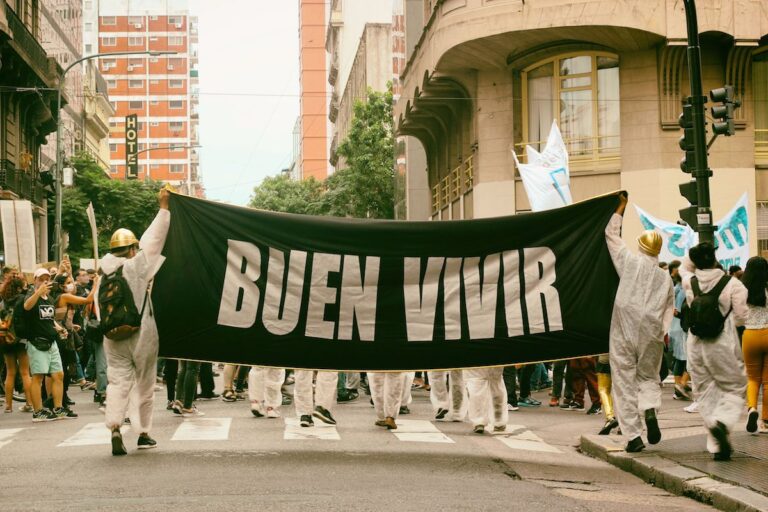La Escuela___: We wanted to begin this conversation with a phrase by Valcárcel that touches on a very important topic for La Escuela, namely the link between art and the reality of its contexts. Roberto stated, "What I see on TV is not real, what I see on TV 'seems' real. I advise all realist painters to paint televisions." For Valcárcel, artists should not aspire to represent reality but to offer alternative perceptions of it. As an artist, how is your relationship with the reality around you?
Institutions Make the World Impossible
04/21/2022
with María Galindo
Roberto Valcárcel (La Paz, Bolivia, 1951 — 2021) was a multidisciplinary artist known for his audacious and questioning works, which represented a break with scholastic art in Bolivia. Through his art history workshops, Valcárcel challenged the local historical discourses, upon which he developed his own narrative, outside the traditional and costumbrista art scene.
On this occasion, we spoke with a person whom Valcárcel recognized as a pupil and a great artist: María Galindo, a creator that moves away from established art schemes and categories to approach activism together with the women’s collective Mujeres Creando [Women Creating]. From La Paz, Bolivia, María talks with La Escuela___ about the legacy of Roberto Valcárcel and her affectionate relationship with him, the current presence of institutions, and the importance of the public space.

María Galindo: I value immensely what Roberto understood as reality because he faced it from a relative conception. In my case, I set out from a totally different concept because I understand the relationship between art and politics, as well as the role of artists and art institutions, from another position. Roberto was, in a way — and to a certain extent, I want to emphasize this — very well treated by the Bolivian art institutions. Whereas I am in open hostility against them because I cannot dissociate them from the classist, racist, and colonial construction they represent.
Roberto found in those artistic institutions a means of subsistence, which I respect. His work was always conceived from the temple of silence and asepsis that museums provide, while mine has always been thought and felt from the outside, from an illegitimate place. Indeed, Roberto worked on many actions of artistic political nature on the street, but what he did was reconstruct the bubble of sacredness in the street. I think about this and I bristle, for I have warmed myself up by the fire of his genius, of his rebelliousness, but without sharing it. I mean, there is no conjunction, continuity, or harmony between our ways of seeing the real.
Regarding this institutional panorama that you speak of, Valcárcel went so far as to affirm that there are no links between "real" themes and "Bolivian art," as was generally written about from a foreign vision of Bolivianness related to historical stereotypes. Is this notion still predominant?
One of Roberto's most meaningful successes (among so many) was his analysis of the stagnation of what was considered "official Bolivian art," that is, gallery art, art history art, art school art; costumbrista, repetitive, colonized, anchored in the 19th century (at best), and also idiotically imparted with certain tyranny by teachers, institutions, and galleries. In Bolivia, there are kingpins of art history education, Spanish doctors who only show a bold, brutal, and colonial Eurocentrism that leaves no room for questioning. In that sense, Roberto has been well treated by institutions but always under a let-him-do-what-he-wants-in-his-exhibitions-as-long-as-he-does-not-question-the-given-structures kind of dynamics.
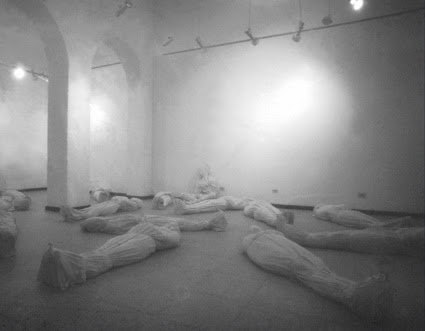
And does costumbrismo continue in the contemporary scene?
About the contemporary, I think we should make an interesting analysis of what happens in music and art as a whole: conceptual, epistemological, and formal ruptures occur in the hegemonic scenarios, afterward the phenomena of repercussion and repetition in art, philosophy, and politics. So, it is not that there are no repercussions that badly copy "the contemporary," there are contemporary expressions. Because the problem is not in contemporaneity in terms of its formal expressions, the problem is in the construction of the racist, classist, and misogynist history that is reproduced in an abusive and flattening way in societies such as the Bolivian one. There are phenomena such as the Museo Nacional de Arte, reserved for a small elite, and on the other hand, a Museo de Etnografía y Folklore, which represents the Museum of the Indian. It is a contradiction that differentiates art from handicrafts, following the classic terms of Bolivian scholasticism.
Since you mention museums and historical narratives, did Valcárcel's analysis find a place within these institutions and traditions?
If there is one thing Roberto was clear about, it was his approach to art history. In this regard, he was an educator like only a few I have met. I have seen a large number of academic lectures on the most important stages of the world and never have I heard a sharper and clearer discourse on history than Roberto Valcárcel’s. But Roberto took his concept of art history upon himself, for his vision was neither assimilated by public universities nor by schools of Fine Arts. Art history in Bolivia is dictated by a Euro-anglocentric retrograde doctor, who appoints the scholasticism of art history a heritage status. Roberto taught his art history workshops at home because there was no pedagogical venue capable of hosting such a deeply subversive and epistemologically unimpeachable vision.
Did you take any of his workshops? We are very curious to know how you met Roberto Valcárcel.
Roberto was quite a bit older than me, generationally speaking, so I was seeing his exhibitions since I was twelve years old; they were exhibitions that moved and invaded me. Also, at that time, when you went into any gallery that was showing Roberto Valcárcel (which occurred relatively often), you would find him sitting there, staring at the public, their reactions, their opinions. The sight of Roberto convulsed me — him as a person and all his work. Then I took one of his workshops. Roberto taught these classes outside the limits of art as an occupation, so journalists, managers, etc., attended them, and he, in turn, shifted his knowledge — born in the art field — to other disciplines.
And what were his classes like? Do you remember anything in particular about them?
His workshops were in person and based on interaction. Roberto crept under my skin and taught me to look at the world — that what his teaching. I practically fell in love with him; Roberto had an indescribable charisma. I remember his hands: I couldn't stop looking at them, they were enormous hands! But of course, he was a very manual man, he did plenty of things with them (despite the kind of art he confronted you with). As an anarchist, I have a fascination with hand-crafted work for all that it entails, but also for what it generates in people, in thought, politics, and philosophy. In this sense, his work was absolutely physical.
A physicality that is more evident in his performance and public space works.
Yes, performance was a moment of uninterrupted physicality in Valcárcel's work.
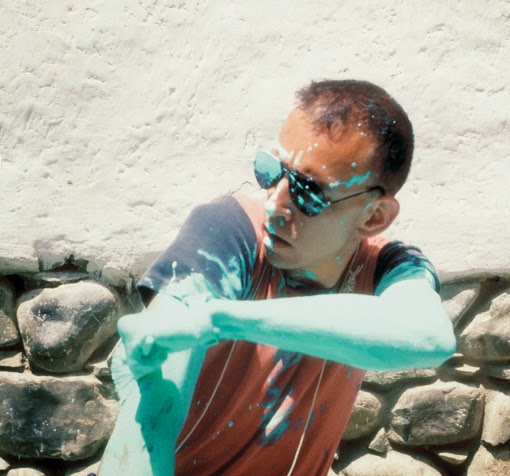


Many of Roberto's works were produced in collectives such as the Grupo Valcárcel. Do you know how collective dynamics took place within this group?
Roberto came up with the Grupo Valcárcel; he created another Roberto, an alter ego that played with the I, the you, and his actual self. You see, Roberto was tremendously generous, that is why he always had people around him who, as I said, warmed themselves up around his fire. Now, this Grupo Valcárcel resurfaces today and vindicates him, but they cannot claim to be co-authors of Roberto's works.
Collective practices have taken on an important role within a certain scope of art dynamics nowadays. Regarding Mujeres Creando, how do collective dynamics come about?
Our movement is a collectivity that has been consistent over time — with 30 years of life. For the record, Mujeres Creando is not an artistic collective. We do a number of political practices that range from accounting to feminist self-defense, going through a zillion things outside the art world. In our case, we have decided to sign the graffiti as a collective action, because they are a process of collective realization, and then the other processes are credited with the author’s name and surname.
I have individual works where I stand alone in deep solitude. And I also have works in complicity with Esther Argollo and Danitza Luna — two great feminist Bolivian artists and members of Mujeres Creando — with whom we have made, experienced, and enjoyed El Milagroso Altar Blasfemo [The Miraculous Blasphemous Altar], which I love and treasure for its collective component, but in which the participation of each artist is clearly differentiated. So, why are we a social collective? Because we dream together. We are together to transform society, to thrive, to access a more complex understanding of women in society, and that is only possible as a collective. We have very good reasons to work together. In fact, I declare my skepticism towards artists’ collectives.
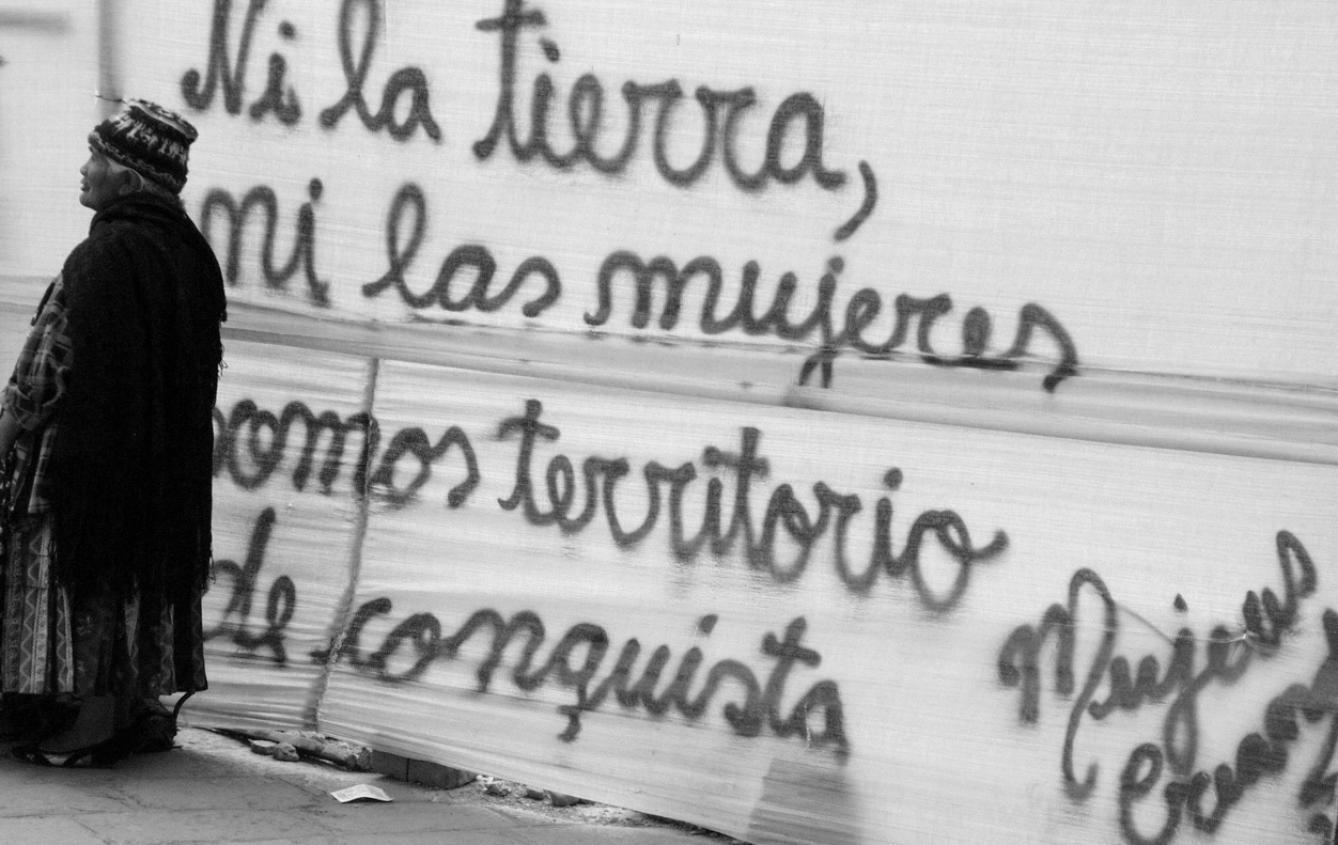
In your work, as in Valcárcel’s, many actions and performances take place in public spaces, in direct contact with anonymous spectators. Was interaction important for Valcárcel?
More than interacting, Roberto was interested in watching. His gaze was very intimidating, even deconstructive. In his relationship with the public, he was sweet and kind; he put his thoughts on the table. Roberto was a deeply conceptual artist in that sense, rather than in the artist's narrative of his work (which is very frequent). You were confronted with the bare artistic concept — not with discourse — which came straight to you.
And in your case, what is the role of public spaces in your work as an artist?
In my case, I am interested in fire, in earthquakes, in lightning, in rain. I am interested in looking for this place of conflict. If somebody asks me what I can do, what I am an expert at, I would say generating conflict, making a scene, making a mess. So public spaces are not just important for my work, in societies like Bolivia's, this is the only real place for democracy, for politics, for history. Because the fact is that, the insides of official institutions are mausoleums, captured by elites from one side or the other. The outside — the public space — not only "represents" something for my work but it also represents, for women's lives, the only real emancipatory place. This is very serious but also very interesting at the same time because it means that, as an emancipatory place, it has been recreated and reconstituted in hallucinating ways.
For example, in all the main cities of this country, there is a colonial, stately, misogynist architecture made out of concrete and built on a masculine model; over that architecture, an ephemeral city rises and subsides every day. There is a contrast between the architecture that women raise in the street every day and the existing rigid architecture. Thus, in terms of the uses of public spaces, I am not a builder but a student. I am some sort of beneficiary of what the crazy, the hungry, the streetwalkers, the prostitutes, the fruit sellers do. I simply observe, collect, rejoice, and enjoy what these women do.
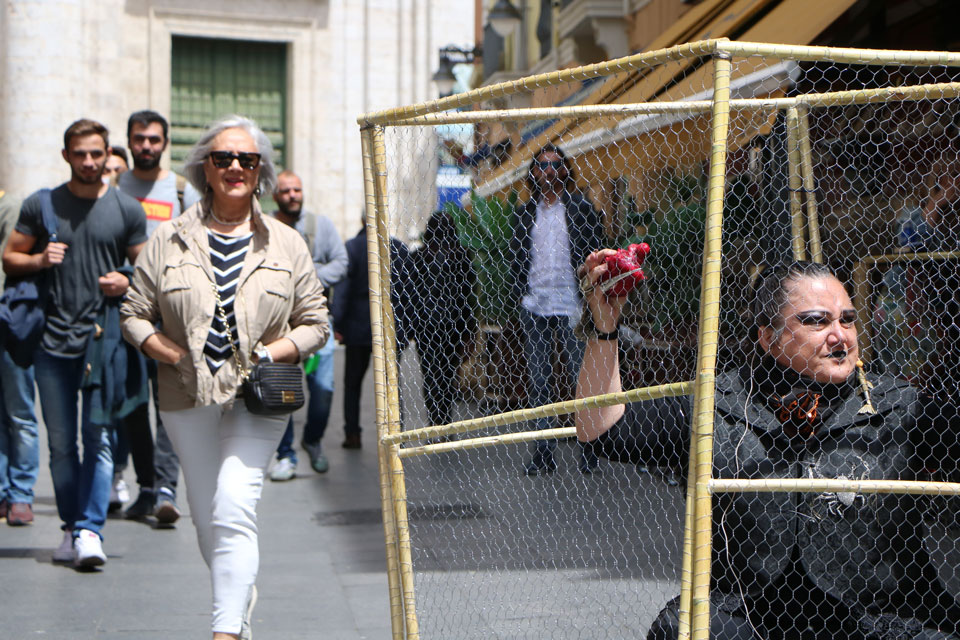
That is a fascinating comparison you make between gender and architecture — the formal and the popular — which in a way embodies one of the slogans of Mujeres Creando: ‘You cannot decolonize without depatriarchalizing.’
However, it does not imply that the popular, ephemeral, female-bodied takeover builds a "real" and a "non-real" architecture. There is a struggle for space, inch by inch, and it is a very hostile war. I mean, the very idea of the popular is considered dirty, ugly, illegal, in need of being regulated and vanquished. The persecution of this architecture is a daily battle. The distribution of the public space is neither easy nor romantic, it is a very rough and tough political act.
On the other hand, I have fallen out with the term 'popular' for many years now, because it is a term that can be easily captured by populism. I prefer to speak of lower and upper because this classification can be understood by anyone. Because I am not talking to the academia but to those on the outside, those from below, those from the inside. There is a spatial contradiction in this that interests me.
In the process of decolonizing structures, how do you think institutions should function today?
I believe institutions make the world impossible; they do not make it possible. And I am talking about an issue I am currently working on, which is producing justice: State institutions are not capable of administering justice for any woman that is raped or murdered. The State is but an empty box full of institutional rhetoric. It sacralizes the educational institution and the family as an institution. It is not a building that you can go and burn down, it is an invisible, immaterial, and complex construct that takes on physical forms.

Such forms are currently being questioned by iconoclastic movements.
Exactly. In an act as interesting and continental as tearing down a statue, you see a symbolic action. But what has really happened? You have actually affected the social imaginary. Amidst this discourse, it is important to clarify that anti-institutionalism is the possibility of breaking everything, while discourses that aspire to take over the institutions from within in order to modify them are institutional hypnosis.
Valcárcel cleverly stayed between both discourses: the institution and the outside.
In no way do I ascribe to that. Roberto had to accept them because they were a means of subsistence. But in no case did he manage to modify any of the institutions where he worked. Furthermore, what happened to Roberto is very serious: he was a victim of some junk contract and ended up being subjected to a situation of institutional exploitation. Within the institutions, his discourse had an impact on the eyes, the skins, and the lives of his students, but not on the institutional structures. Today, there is social pain in Bolivia and that makes me angry. I believe anger is necessary. Roberto died because there is no social security in our country.
Finally, María, how did Roberto Valcárcel's presence influence your life?
Beyond an anecdote, I can tell you that I arrived at Roberto’s workshops feeling insignificant, like I was nothing and nobody. I felt very invisible, very anonymous, but I was full of life, dreams, and curiosity. Roberto perceived everything I had inside; he helped me to work on it. He is an indelible mark on me. I miss him, I love him, and it hurts me that he died. And I believe we can end this meeting with that.

